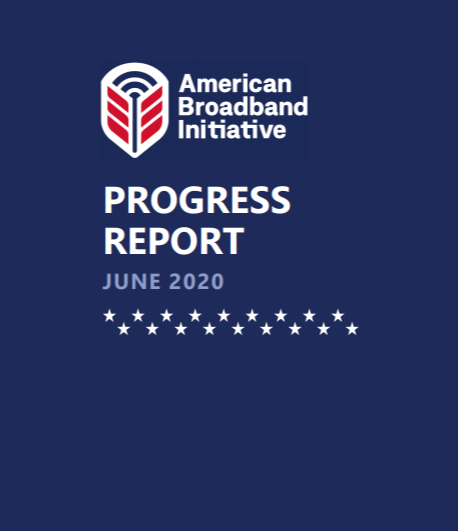White House Cites 'Important Progress' in Closing Rural Digital Divide

The White House said that the President's American Broadband Initiative has made "important progress" in expanding rural broadband access.
That is according to the just-released American Broadband Initiative Progress Report.
“President Trump has made expanding rural broadband access a top priority, and Americans nationwide are seeing results," said chief technology officer Michael Kratsios (he is in the White House Office of Science and Technology Policy). Kratsios said that since the launch of the initiative last year that important progress has come in "removing barriers to broadband deployment and spurring investment in network buildout."
Related: Trump Calls for National Spectrum Strategy
The initiative launched last February, driven in part by the President's desire to help farmers get high-tech connections for precision agriculture, but the pandemic has put an exclamation point on the need to close the rural digital divide for everything from remote healthcare to virtual classrooms.
The progress report was issued the same day that House Republicans unveiled over a dozen bills to further speed deployment of wireless and wired broadband, principally by cutting regulatory "red tape" related to infrastructure buildouts.
Among the examples of progress the report points to was the FCC's creation of the Rural Digital Opportunity Fund, which will give out a total of $20 billion over 10 years for broadband buildouts "in the hardest to reach areas." The reverse auction for the first tranche of those funds--$16 billion--is slated to be held this fall.
The smarter way to stay on top of the multichannel video marketplace. Sign up below.
Related: FCC Invests More in Rural Broadband
The White House also cited the FCC's coordination with the USDA so that its rural broadband subsidies don't overlap with either the RDOF fund or the FCC's $9 billion 5G buildout fund.
Other examples of progress include that 1) about four million rural Americans have gained access to broadband internet; 2) since 2017, the number of Americans with no access has decreased by 30%; 3) consecutive records (in 2018 and 2019) for new fiber deployment.
Contributing editor John Eggerton has been an editor and/or writer on media regulation, legislation and policy for over four decades, including covering the FCC, FTC, Congress, the major media trade associations, and the federal courts. In addition to Multichannel News and Broadcasting + Cable, his work has appeared in Radio World, TV Technology, TV Fax, This Week in Consumer Electronics, Variety and the Encyclopedia Britannica.

